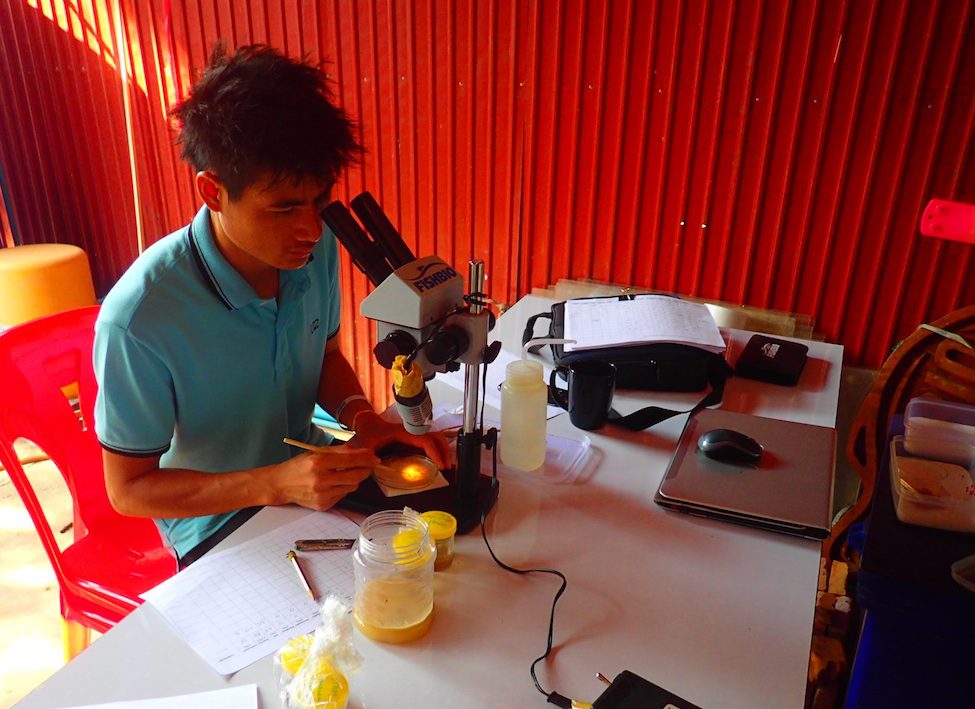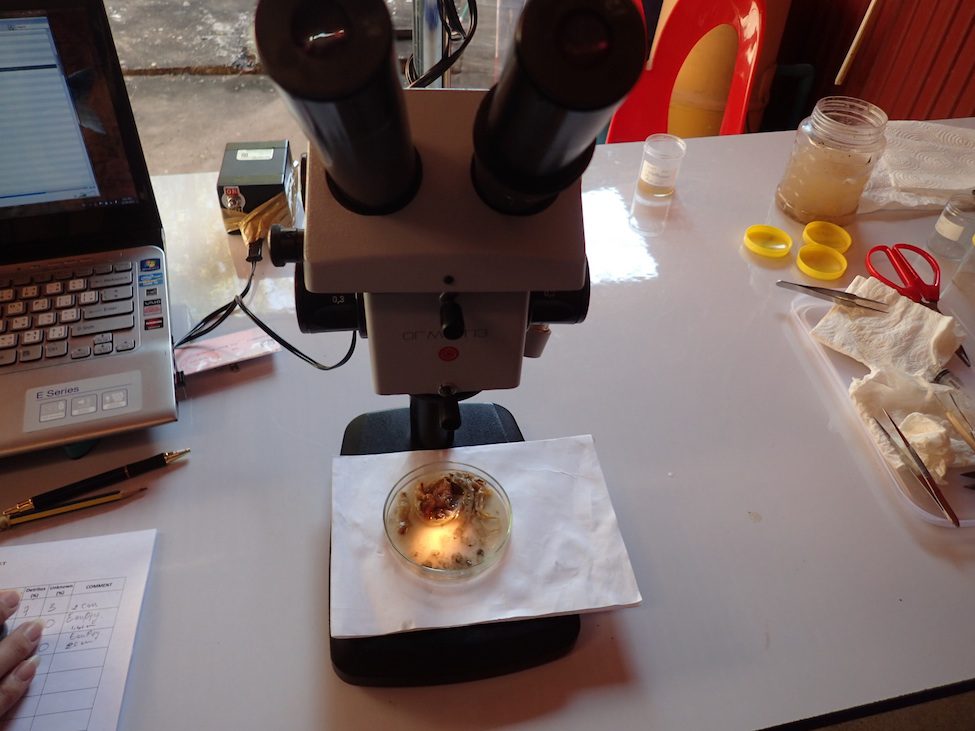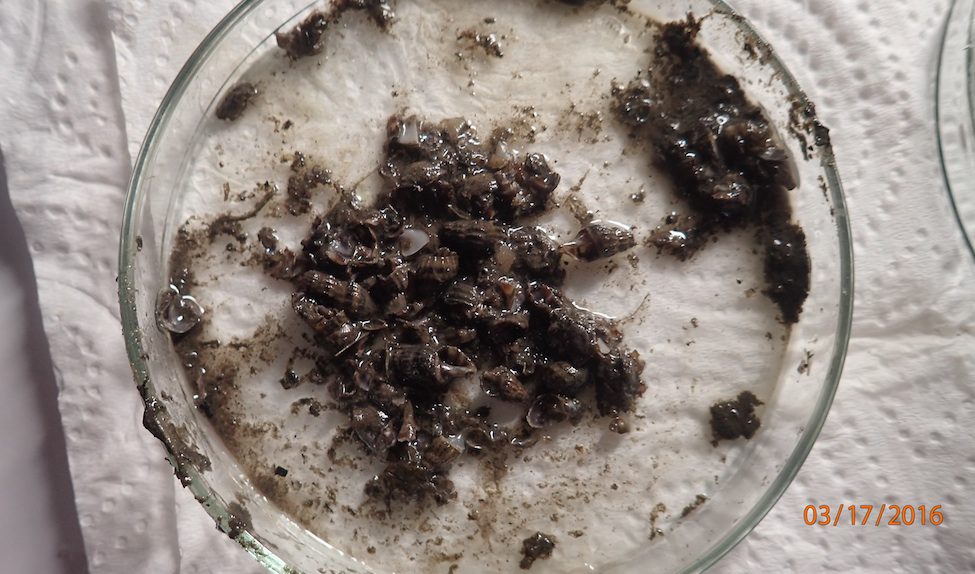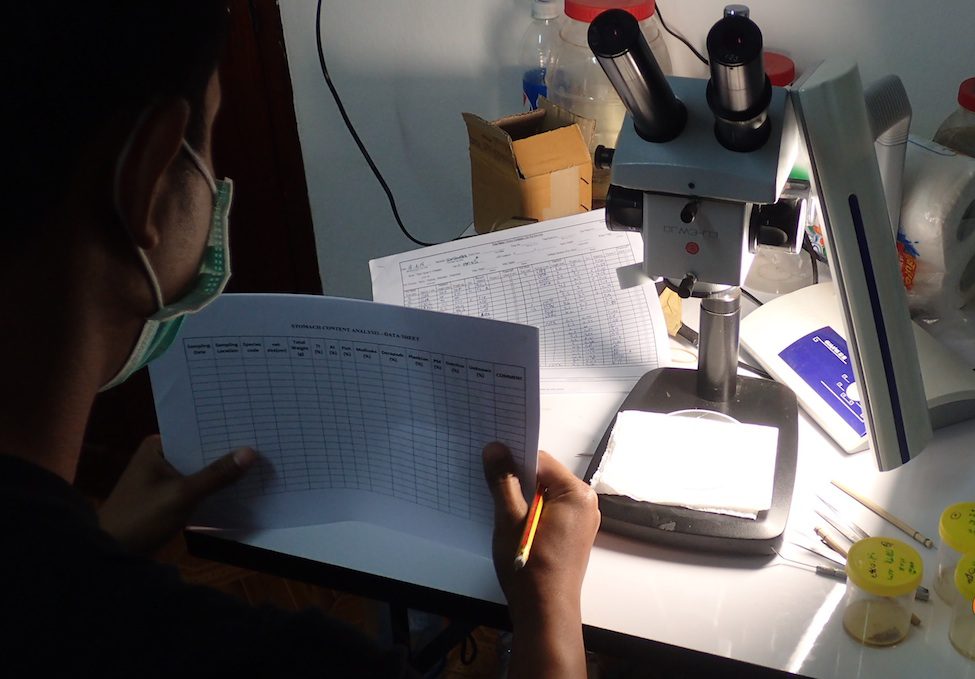Wednesday June 1, 2016
 FISHBIO staff in Laos recently analyzed the stomach contents from fish caught during gillnet sampling to identify the kinds of food fish are eating during the rainy season. This is not an easy task because it requires a lot of effort and time to separate all the bits of prey encountered in the stomach of each predator, but the results are very interesting! During this project, we transformed the back patio of our Lao office into an outdoor laboratory. Fish stomach content analysis requires the use of several tools, such as a microscope, surgical instruments, clean water and a camera. When we collect the stomach of a fish in the field, we record the species name and if we know whether the fish is male or female. We collected up to 15 individuals of each species, and in total we analyzed the stomachs of 579 fishes from 59 species.
FISHBIO staff in Laos recently analyzed the stomach contents from fish caught during gillnet sampling to identify the kinds of food fish are eating during the rainy season. This is not an easy task because it requires a lot of effort and time to separate all the bits of prey encountered in the stomach of each predator, but the results are very interesting! During this project, we transformed the back patio of our Lao office into an outdoor laboratory. Fish stomach content analysis requires the use of several tools, such as a microscope, surgical instruments, clean water and a camera. When we collect the stomach of a fish in the field, we record the species name and if we know whether the fish is male or female. We collected up to 15 individuals of each species, and in total we analyzed the stomachs of 579 fishes from 59 species.
 We do a careful surgery to remove the stomach of each fish and weigh the stomach. We then use scissors to cut the stomach and use a steel sweep to pull out all the food found inside. We use some water drops to help us view the prey, and then identify the food types by classifying them into different groups, such as fish, eggs, frogs, snails, shellfish, shrimp, aquatic and terrestrial invertebrates, plants, plankton, and mud. We use the microscope to assess the percentage of each food type in the stomach based on the body parts of various prey types. This project took us a few weeks to complete, and we discovered that the food types most commonly found in the fish during the rainy season included aquatic and terrestrial invertebrates, mollusks, plants, fish, crustaceans, plankton and detritus. The most interesting species we analyzed was the common carp (Cyprinus carpio) because of all the shellfish found in its stomach!
We do a careful surgery to remove the stomach of each fish and weigh the stomach. We then use scissors to cut the stomach and use a steel sweep to pull out all the food found inside. We use some water drops to help us view the prey, and then identify the food types by classifying them into different groups, such as fish, eggs, frogs, snails, shellfish, shrimp, aquatic and terrestrial invertebrates, plants, plankton, and mud. We use the microscope to assess the percentage of each food type in the stomach based on the body parts of various prey types. This project took us a few weeks to complete, and we discovered that the food types most commonly found in the fish during the rainy season included aquatic and terrestrial invertebrates, mollusks, plants, fish, crustaceans, plankton and detritus. The most interesting species we analyzed was the common carp (Cyprinus carpio) because of all the shellfish found in its stomach!



